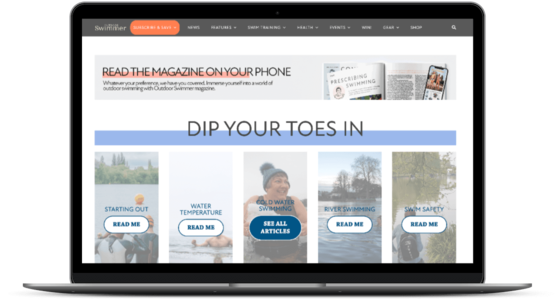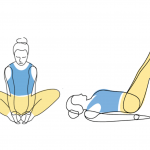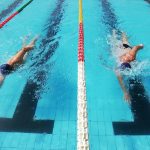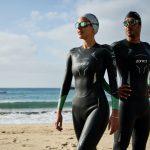
My Swim Story – Graeme Moore
Graeme Moore suffers from Charcot-Marie-Tooth disease and has had both his feet amputated. This summer he plans to complete the Great North Swim
Tell us how you got into open water
swimming?
I raced in the pool as a youngster,
and continued into my 20s and even
early 30s. At that time my daughter
was getting into swimming and that
led me into coaching and my eventual
involvement with Phoenix Triathlon.
After my first amputation in 2014 I
decided to set myself a challenge as
part of my recovery and rehabilitation
so I signed up for the Great North
Swim 2015 in Windermere. I trained in
the pool initially and then went with a
group to Ellerton Lake for my first ever
open water swim. I did four laps, which
is just over a mile, and it felt fantastic.
How did you get on in your first mass
participation event?
It’s a little tricky at the Great North
Swim as it’s a land-based start.
However, the support and the life
guards were fantastic. I got into the
water after everyone else in my wave
and the lifeguards promised to meet me at the end with my wheelchair. The biggest problem is that I’m a relatively fast swimmer so I soon started overtaking other swimmers andit got a bit chaotic in the middle. I felt like I was in the middle of a cavalry charge. However, it was a really big step forwards for me and a fantastic achievement to finish.
How’s your training going for 2017?
Unfortunately, I haven’t been able
to get into the water these past few
months. Over the last 20 years I’ve
had numerous operations on my feet
to try to straighten them and repair
the damage caused by my illness.
However, it got to the stage where the
best course of action was amputation
and I had my second foot removed in
August 2016. The stump is still tender
and fragile so I’ve been advised to keep
out of the water for now and I have to
confess that I’ve put on a little weight
as a consequence. On the other hand,
I’ve been working with a great team of physiotherapists who’ve really put me through my paces and helped maintain and build my upper body strength. I hope to get back in the water soon!
How did your first amputation affect
how you swim?
Not as badly as I feared, especially
when wearing a wetsuit, so I’m hoping
for something similar now I have both feet removed. I’ve already had my wetsuit adapted for one stump so I need to go back and have the same thing done on the other leg. In training, I use a pull buoy a lot as I have to rely totally on my upper body for propulsion so I’m also looking to see if I can get something built into my wetsuit that works a bit like a pull buoy in the open water. It’s not as if I’m racing or competing so I don’t think it’s cheating. I just want to make myself as comfortable in the water as I can be.
How has your disability changed the
way you coach?
On a practical level it’s made it much
harder to coach cycling or running
sessions, although I am working with
Evans (the bike shop) to see if they
can adapt a road bike so that I can
ride it. I do my poolside coaching
from a wheelchair. I think having
gone through what I have helps me
tune in and empathise better with
other people who are going through
difficult changes in their lives. I’d also
like to think that seeing me making the
effort and getting to the pool to coach
inspires the people in my sessions to
try a little harder. There are definitely
some positives that come from it.
What advice would you offer to other
people recovering from setbacks or
injury?
Keep a positive attitude and don’t let
things beat you. I always look for ways
around problems. Disability shouldn’t
stand in your way. There is a way
forward and a place for you in society.
Your worth is the same.
Through the
events Graeme
takes part in
he raises funds
for the Arctic
One Foundation
which provides
vital equipment
to give children
and adults with
disabilities the
opportunity to take part in sports. He is an Ambassador for Sports with the Arctic One Foundation in the North East.
What’s your Swim Story? Email: editor@outdoorswimmer.com with the subject ‘Swim Story’








